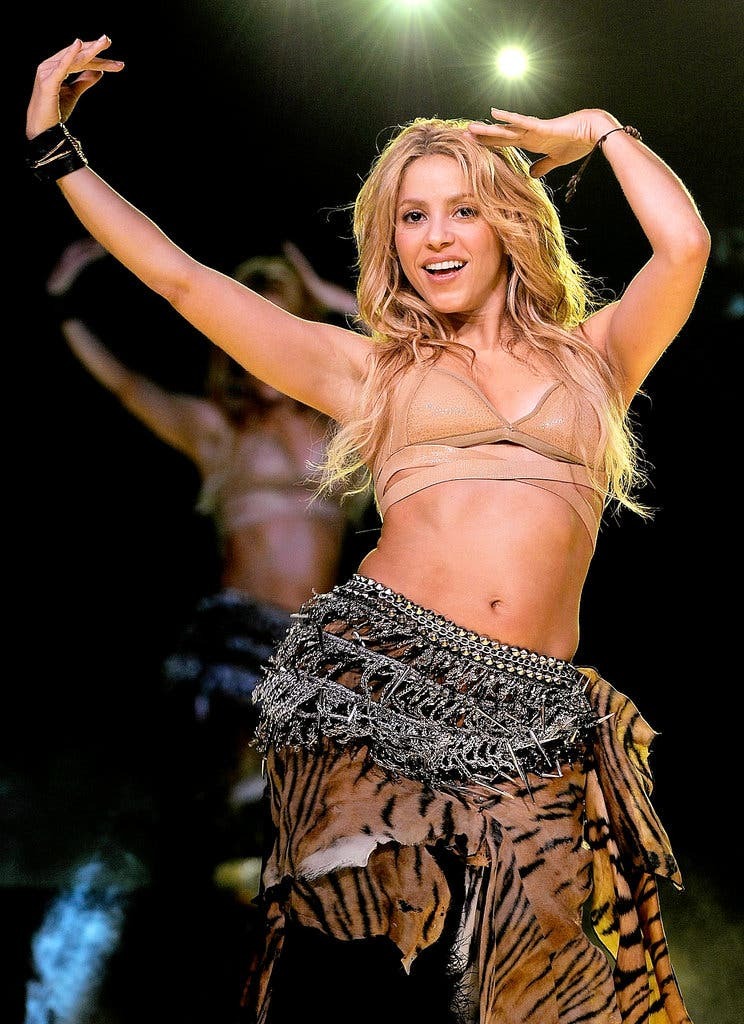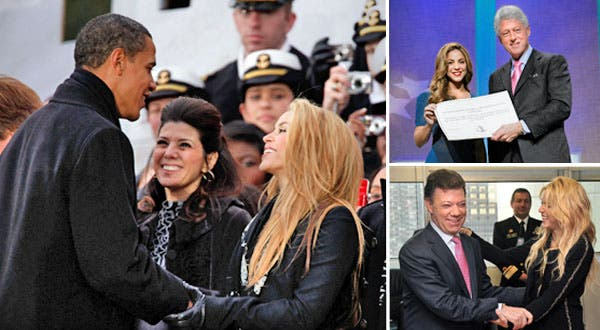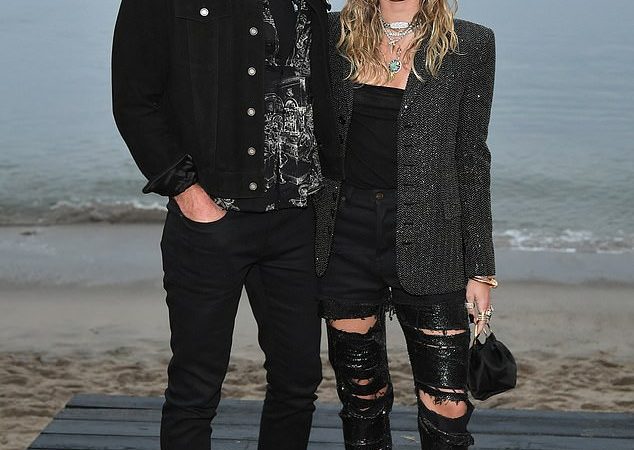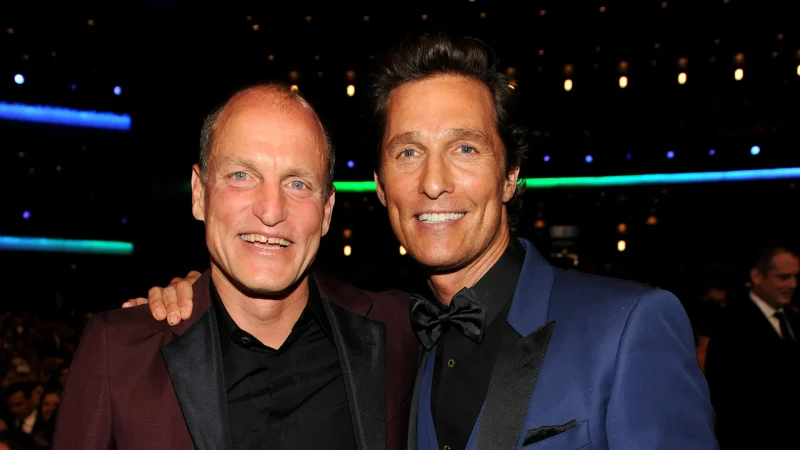Shakira Conquers New Arenas

IT was just another day in New York City for Shakira, toggling between pop star and do-gooder. She spent the early morning of Sept. 23 at Rockefeller Center for a five-minute interview on “Today” to promote her new album, “Sale el Sol” (“The Sun Comes Out”). Asked how she gets her hips to move the way they do, she replied, with a giggle, “A magician doesn’t reveal the tricks.”

That’s about as much guile as Shakira would ever show. Her greatest trick if it is one has little to do with her famous hips, which can move every which way without special effects. But it’s far more difficult to maintain Shakira’s air of transparency, the ease with which she leaps from culture to culture, role to role and language to language, all with bubbly girlishness and, behind it, a perfectionist’s attention to detail.

“Sale el Sol” (Epic) is Shakira’s latest shift of direction. Her 2009 album, “She Wolf,” aimed for the international common denominator of electronic dance music; Shakira produced most of it with the Neptunes, a team of prolific, and familiar, hip-hop and R&B hit makers. “Sale el Sol,” with songs primarily in Spanish, drops that mainstreaming strategy in favor of instinct, whim and glimmers of what Shakira, 33, calls nostalgia. It’s full of idiosyncratic crossovers and hybrids, often tied to very specific places.
“It’s like I found myself again,” Shakira said. “You get influenced by everything you hear on the radio, or maybe by what you feel that other people’s expectations are. But then you suddenly realize that everything you need to write about is what’s inside of you to not look outside but inside.”
Pitbull, a Cuban-American rapper who appears on the album, said: “On the last album they tried to Americanize Shakira by giving her the big producers. Not that it was necessarily a bad thing, but it’s just not her.”
Moments after her “Today” appearance, Shakira ducked into a downstairs dressing room to finish writing a speech for her next stop: a conference room at the United Nations Development Program building. She emerged wearing a sleek black pantsuit with silvery trim, and climbed into a black S.U.V. for a long crawl crosstown, which gave her ample time for an interview. After being whisked through United Nations security, she touched up her lipstick and joined the president of her native Colombia, Juan Manuel Santos, to announce the formation of Colombians From Birth, a $25 million public-private initiative to improve early-childhood education.
“The only way to overcome poverty and inequality is changing the equation in which a child that is born poor will die poor,” she said in her speech, in Spanish, with President Santos at her side. “And that equation can best be solved during the first years of life.” President Santos embraced her warmly, and praised the Shakira concert he’d attended at Madison Square Garden two nights earlier as “emocionante” thrilling
Shakira performs at Madison Square Garden on September 21, 2010 in New York, New York.Credit…

After the officials left the conference room, Shakira said earnestly, “My work as an artist helps me get close to people that have an enormous influence on the lives and destinies of so many, like the president of my country, so I can discuss things that are far more important than myself.”
Her day had only begun. Back in pop-star mode, Shakira would preview “Sale el Sol” for the Latin press, summing it up for sound bites as part rock, part romantic, part Latin. Then she was off to “The Late Show With David Letterman,” where she and her dancers shimmied through her new single, the distinctly Latin “Loca,” a merengue with rapping. Afterward Shakira flew to Florida to continue her arena tour: another night of glitter, hip swiveling and bilingual singalongs.
Shakira Isabel Mebarak Ripoll has been working like that for most of her life: first in Colombia, where she emerged from the Caribbean coastal city of Barranquilla as a teenage “rockera” she translates it as “rock chick” and eventually as the globe-hopping star who may well be Latin America’s most famous performer. She’s a brand name; she just introduced her own fragrance, the vanilla-and-sandalwood S by Shakira. Yet she hasn’t forgotten her origins. With sweet determination she has continually mixed the local and the global. “Hips Don’t Lie,” her ubiquitous 2006 hit, included a line in Spanish “Look, in Barranquilla we dance like this” as the video showed dance moves from Barranquilla’s Carnaval.
But last year’s “She Wolf” came close to homogenizing Shakira. It aimed for the kind of electronic club beats that were also powering Black Eyed Peas and Lady Gaga, and at times the production ran Shakira’s distinctively tremulous voice through the dehumanizing Auto-Tune. Although the album reached the Top 10 in the United States and elsewhere, and “She Wolf” was a gold single in the United States, the album has only sold 352,000 copies here after a string of million sellers.
“Sale el Sol” follows it quickly, compared with the four-year gap between “She Wolf” and Shakira’s previous albums, “Fijáción Oral Vol. 1” and “Oral Fixation Vol. 2,” both in 2005. “I realized that the world was faster than I am, and I’ve got to catch up somehow,” she said.

While the album’s тιтle song, the folk-rock “Sale el Sol,” calls for optimism through difficult times, songs like “Devoción,” “Antes de las Seis” (“Before 6 O’Clock”) and “Lo que Más” (“The Most”) churn with longing, regrets and loneliness. “We all go through hard moments,” Shakira said. “Whatever happened, it’s right there in the the songs.” She smiled. “I’ve decided that I’m not going to explain every song this time. It’s hard to explain a song. These songs explain me better than I can explain them.”
The music hopscotches across hemispheres, at times looking back to the music Shakira loved while growing up in Barranquilla. “Barranquilla is the cradle of Carnaval in our country,” she said. “All the stuff from the islands and from those neighbor countries, all that music got to Barranquilla.”





